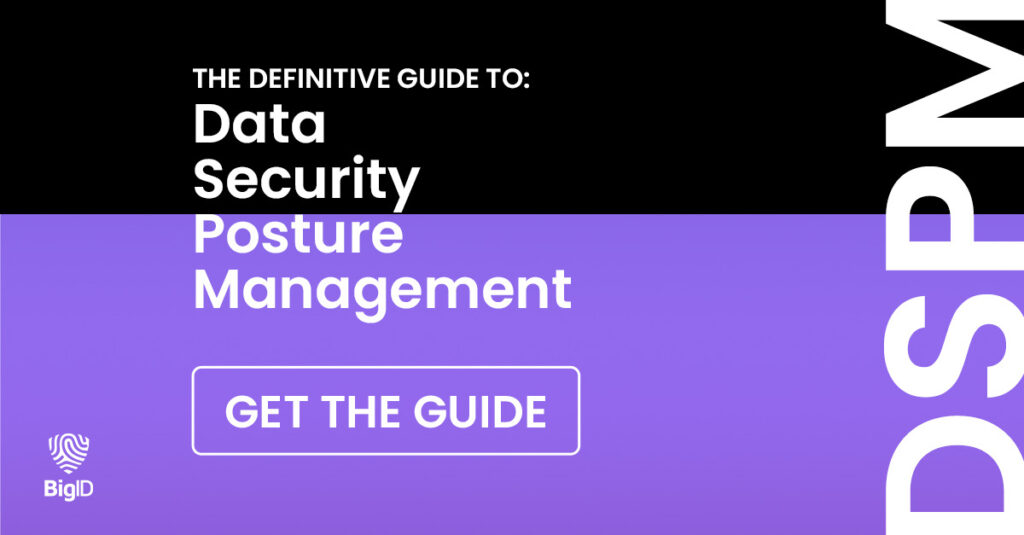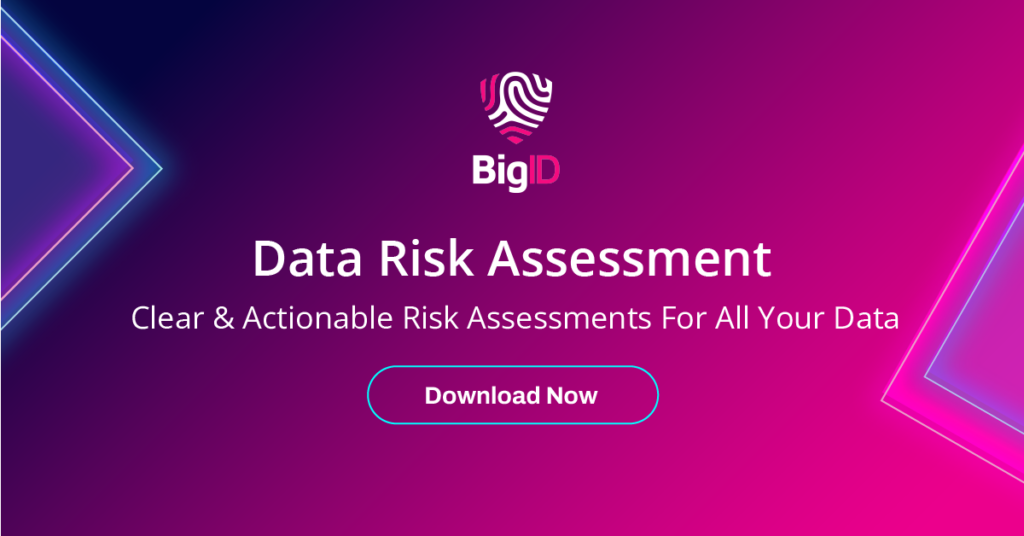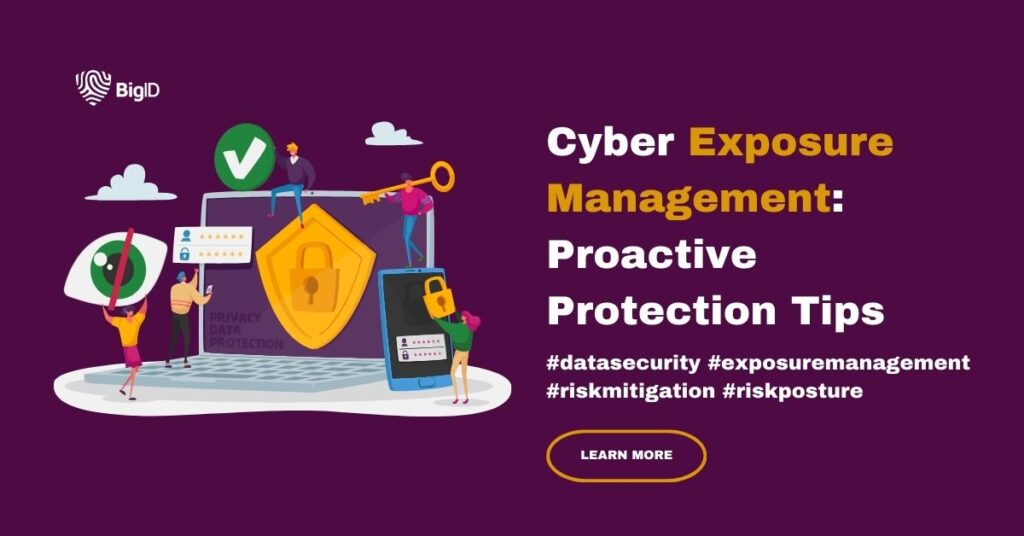What is Exposure Management?
Within cybersecurity, exposure management is the process of identifying, assessing, and mitigating potential vulnerabilities or weaknesses within an organization’s information technology (IT) infrastructure. It involves proactive measures to minimize the risks associated with these vulnerabilities and ensure the security of an organization’s systems and data.
Key Components of Exposure Management
- Vulnerability Assessment: This involves identifying and evaluating vulnerabilities within an organization’s IT infrastructure, including networks, systems, applications, and devices. Vulnerability scanning tools and techniques are often used to discover potential weaknesses.
- Risk Assessment: Once vulnerabilities are identified, a risk assessment is conducted to determine the potential impact and likelihood of exploitation. This assessment helps prioritize vulnerabilities based on their severity and potential impact on the organization’s operations, assets, and reputation.
- Risk Mitigation: After prioritizing vulnerabilities, appropriate measures are implemented to reduce or eliminate the identified risks. This may involve applying security patches and updates, configuring security settings, implementing secure coding practices, or deploying additional security controls like firewalls, intrusion detection systems (IDS), or data encryption.
- Security Awareness and Training: Employees play a significant role in maintaining a secure environment. Organizations should provide security awareness programs and training to educate employees about potential risks, phishing attacks, social engineering techniques, and best practices for handling sensitive information.
- Incident Response Planning: Despite proactive measures, security incidents may still occur. Developing an incident response plan ensures that the organization has a well-defined strategy and procedures in place to detect, respond to, and recover from security incidents effectively.
- Continuous Monitoring and Testing: Exposure management is an ongoing process. Regular monitoring and testing of systems and networks are necessary to identify new vulnerabilities, assess the effectiveness of implemented controls, and detect potential security breaches.
Organizations that address risks related to unauthorized access, compliance, resilience, insider threats, and evolving cybersecurity landscapes, can better safeguard their data assets and maintain trust in an increasingly interconnected and digital world.

On-prem and Cloud Data Exposure Risk
Exposure management is essential for both on-premises (on-prem) and cloud data environments to mitigate risks and fortify overall data security. The risks associated with inadequate exposure management can have severe consequences for organizations. Here’s a breakdown of why exposure management is crucial in both on-prem and cloud data scenarios:
1. Data Breach Prevention:
- On-Premises: In on-prem environments, unauthorized access, physical theft, or internal threats pose significant risks. Exposure management helps control access, monitor activities, and prevent data breaches within the physical confines of an organization.
- Cloud: Cloud data introduces new vectors for breaches, including misconfigurations, unauthorized access, and external attacks. Effective exposure management is vital to ensure robust cloud security, preventing unauthorized access to sensitive information stored in the cloud.
2. Regulatory Compliance:
- On-Premises: Many industries are subject to strict regulations governing data protection and privacy. Proper exposure management in on-premises environments is necessary to comply with regulations such as GDPR, HIPAA, or PCI DSS, avoiding legal repercussions and fines.
- Cloud: Cloud service providers adhere to specific compliance standards, but organizations are responsible for configuring and securing their cloud instances. Exposure management helps maintain compliance by ensuring data in the cloud adheres to regulatory requirements.
3. Data Resilience:
- On-Premises: In the event of disasters or system failures, on-premises data must be resilient to ensure business continuity. Exposure management includes implementing robust backup and recovery solutions, minimizing the impact of unexpected incidents.
- Cloud: Cloud environments offer scalability and redundancy, but without proper exposure management, data may still be vulnerable to loss. Managing access controls, encryption, and implementing backup strategies are crucial for ensuring data resilience in the cloud.
4. Insider Threat Mitigation:
- On-Premises: Insider threats, intentional or unintentional, can compromise on-premises data security. Exposure management helps monitor user activities, detect anomalous behavior, and restrict access, reducing the risk of data breaches from within.
- Cloud: Insider threats extend to cloud environments, where employee errors or malicious actions can have significant consequences. Effective exposure management involves implementing robust identity and access management policies to mitigate these risks.
5. Cybersecurity Landscape Changes:
- On-Premises: As cyber threats evolve, on-premises environments must adapt to new challenges. Regular exposure management practices, including vulnerability assessments and patch management, are crucial to fortify defenses against emerging threats.
- Cloud: Cloud environments are not immune to evolving cybersecurity threats. Exposure management in the cloud requires continuous monitoring, threat detection, and timely response to address new vulnerabilities and attack vectors.
Proactive Exposure Management Strategy
To get ahead of cyber risk with exposure management, organizations should adopt a proactive approach that focuses on identifying and mitigating vulnerabilities before they can be exploited. Here are some key steps to consider:
- Risk Assessment and Prioritization: Conduct a comprehensive risk assessment to identify potential vulnerabilities and their potential impact on the organization. Prioritize risks based on their severity, likelihood of exploitation, and potential consequences. This helps allocate resources effectively and address the most critical risks first.
- Vulnerability Management Program: Establish a structured vulnerability management program that includes regular vulnerability scanning, patch management, and system updates. This ensures that known vulnerabilities are promptly identified and mitigated. Automated vulnerability scanning tools can assist in detecting and tracking vulnerabilities across the organization’s systems.
- Secure Configuration Management: Implement secure configuration practices for all systems, devices, and applications within the organization’s IT infrastructure. This includes hardening systems, disabling unnecessary services and protocols, implementing strong access controls, and following industry best practices and security guidelines.
- Regular Security Assessments: Conduct periodic security assessments, including penetration testing and vulnerability scanning, to identify potential weaknesses and gaps in the organization’s defenses. These assessments provide insights into emerging threats and help validate the effectiveness of existing exposure management controls.
- Continuous Monitoring: Implement real-time monitoring solutions to detect and respond to potential security incidents promptly. Continuous monitoring enables organizations to identify suspicious activities, detect anomalies, and mitigate exposure management threats before they result in significant damage.
- Security Awareness and Training: Foster a culture of security awareness among employees through regular training programs. Educate employees about common cyber risks, phishing attacks, social engineering techniques, and best practices for maintaining a secure computing environment. Well-informed employees can act as an additional line of defense against exposure management threats.
- Incident Response Planning: Develop a comprehensive incident response plan that outlines clear steps for detecting, containing, and mitigating exposure management threats. The plan should include roles and responsibilities, communication protocols, and procedures for timely incident response and recovery.
- Third-Party Risk Management: Assess and manage the cybersecurity risks associated with third-party vendors and partners. Establish proper due diligence procedures to evaluate the security practices of third-party entities that have access to the organization’s systems or sensitive data.
- Stay Informed: Continuously monitor cybersecurity news, industry trends, and emerging threats. Stay connected with cybersecurity communities, information sharing platforms, and government agencies to stay ahead of the evolving cyber risk landscape.

Be Prepared for All Attacker Types
In exposure management, organizations may face attacks from various types of threat actors. Here are some of the most common attackers commonly encountered in the cybersecurity landscape:
- Hackers: Hackers are individuals or groups who exploit vulnerabilities in computer systems and networks to gain unauthorized access, steal data, disrupt operations, or cause damage. They can be motivated by financial gain, political motives, or simply the challenge of compromising systems.
- Malware Authors: Malware authors develop and distribute malicious software, such as viruses, worms, Trojans, ransomware, and spyware. These individuals or groups create and deploy malware with the intent to compromise systems, steal information, or gain control over targeted devices.
- State-Sponsored Actors: State-sponsored attackers are government-affiliated individuals or groups who conduct cyber espionage, sabotage, or disruption activities on behalf of a nation-state. These attackers often possess advanced capabilities and target critical infrastructure, government entities, defense organizations, or industries of strategic importance.
- Organized Criminal Groups: Organized criminal groups engage in cybercrime for financial gain. They may be involved in activities such as identity theft, credit card fraud, data breaches, ransomware attacks, or the creation and operation of botnets for various malicious purposes.
- Insider Threats: Insider threats refer to individuals within an organization who misuse their authorized access to systems and data for malicious purposes. These individuals may be disgruntled employees, contractors, or business partners who steal sensitive information, cause damage, or disrupt operations.
- Hacktivists: Hacktivists are individuals or groups who engage in cyber attacks to promote political or social causes. They target organizations they perceive as opposing their beliefs or engage in cyber activities to raise awareness or protest against specific issues.
- Script Kiddies: Script kiddies are amateur attackers who lack sophisticated technical skills but use pre-existing tools, scripts, or exploit code to launch attacks. Their motivations are often driven by a desire for fame, thrill-seeking, or mischief rather than specific objectives.
- Advanced Persistent Threat (APT) Groups: APT groups are highly sophisticated and well-resourced threat actors, often associated with nation-states or state-sponsored activities. They conduct long-term, targeted attacks against specific organizations or sectors with the goal of espionage, intellectual property theft, or disruption.
It’s important to note that attackers can evolve their tactics, techniques, and motivations over time, and new threat actors can emerge. Additionally, attacks can involve multiple actors working together or exploit vulnerabilities unintentionally left open by legitimate users. Therefore, organizations need to maintain a vigilant and adaptive approach to exposure management to defend against a wide range of potential attackers.
Data Exposure Risk Mitigation and Compliance
Mitigating risks against attackers and complying with privacy and security regulations requires implementing a robust set of best practices. Here are some key practices to consider:
- Strong Access Controls: Implement strong access controls to ensure that only authorized individuals have access to sensitive data and systems. This includes enforcing strong passwords, implementing multi-factor authentication (MFA), and regularly reviewing and updating user access privileges based on the principle of least privilege.
- Employee Training and Awareness: Provide regular training and awareness programs to educate employees about security best practices, such as recognizing phishing emails, avoiding suspicious links, and safeguarding sensitive information. Encourage employees to report security incidents or potential threats promptly.
- Incident Response Plan: Develop an incident response plan that outlines the steps to be taken in the event of a security incident. Define roles and responsibilities, establish communication channels, and conduct regular drills and exercises to test the effectiveness of the plan.
- Data Backup and Recovery: Implement regular and automated data backup processes to ensure that critical data is regularly and securely backed up. Test the restoration process periodically to ensure that data can be recovered effectively in the event of a data breach or system failure.
- Vendor Management: Evaluate the security practices of third-party vendors and partners with whom you share data or rely on for services. Implement proper due diligence procedures and include security requirements in vendor contracts to ensure that they comply with privacy and security regulations.
- Privacy by Design: Adopt a privacy-centric approach by incorporating privacy considerations into the design of systems, applications, and processes from the outset. This includes implementing privacy controls, data minimization principles, and transparency in data handling practices.
- Compliance Monitoring and Audit: Regularly monitor and assess your organization’s compliance with applicable privacy and security regulations. Conduct internal audits or engage third-party auditors to ensure ongoing compliance and identify areas for improvement.
BigID’s Approach to Cyber Exposure Management
Today’s organizations face more cyber threats than ever before and need data-centric, risk-aware security approaches to safeguard critical enterprise data. Building a trustworthy cybersecurity strategy will provide insights into the location of the most critical data, assess risk, and maintain compliance with regulations.
BigID is the industry leading platform for data privacy, security, and governance enabling organizations to gain visibility and complete coverage across the multicloud, on-prem and beyond. With BigID, you can:
- Know Your Data: Leverage BigID’s advanced ML and AI to automatically discover, classify, categorize, tag, and label sensitive data with accuracy, granularity, and scale.
- Reduce Your Attack Surface: With BigID, organizations can manage, delegate, and execute deletion to accelerate minimization initiatives and reduce the attack surface — or the number of vulnerable touchpoints in the event of a breach.
- Mitigate Insider Risk: With BigID, you can achieve Zero Trust and mitigate the risk of unwanted data exposure, use, and leakage at the enterprise scale. Monitor, detect, and respond to unauthorized exposure, data usage, and suspicious activity around sensitive data.
- Streamline Data Breach Response: BigID’s identity-aware breach analysis detects and investigates breach impact, facilitates prompt incident response, and notifies relevant authorities and affected consumers.
Start your data protection and risk reduction journey with BigID— get a 1:1 demo with our experts today.



